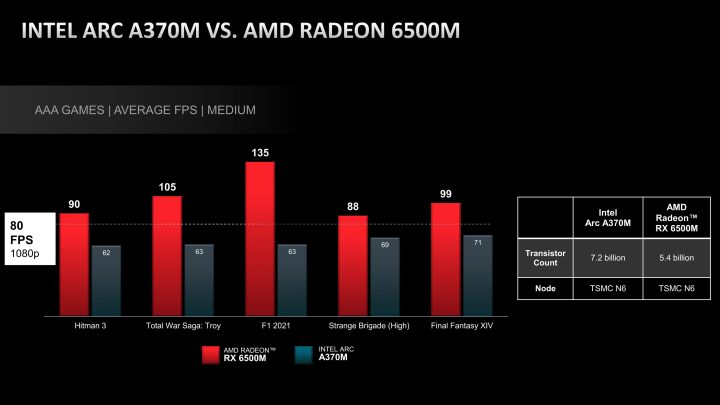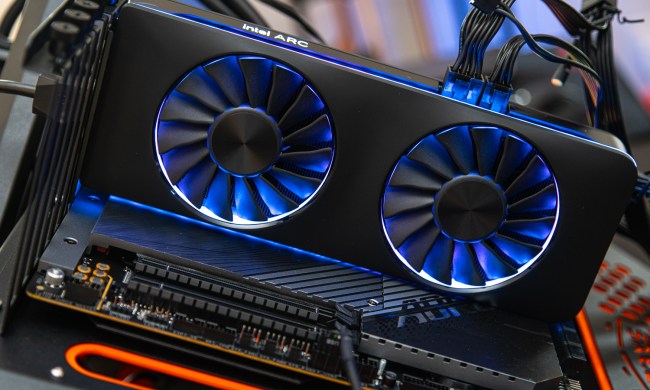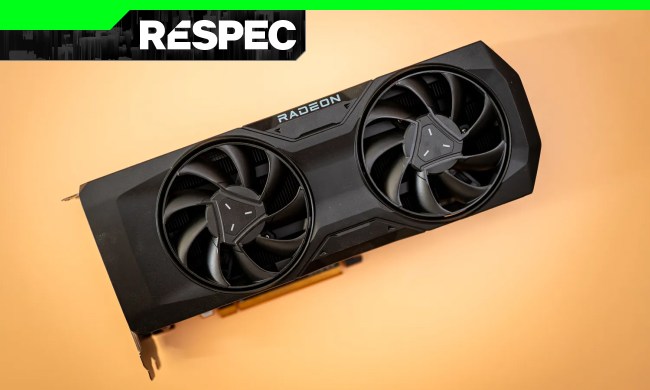Intel hasn’t provided comparisons between its new discrete Intel Arc Alchemist GPUs and the competition, so AMD took it upon itself to fill in the missing information.
AMD compared the Intel A370M GPU to its own RX 6500M. The results were not great for Intel.

Intel Arc Alchemist graphics cards have only just been released, so there isn’t much in the way of benchmarks for users to check out before choosing to buy a laptop with those GPUs. Intel has provided some comparisons to give an idea of the performance of the A370M and A350M, but it mostly compared the GPUs to its own Iris Xe integrated
With only Intel benchmarks to go by, all we could do to gauge the performance of thev A370M was to speculate based on its specs. The company did not send out samples of the product to reviewers ahead of time either. As such, until the first actual users receive their Intel Arc products, we wouldn’t have known much … if not for AMD.
AMD decided to compare its Radeon RX 6500M laptop graphics card to Intel’s A370M, which happens to be the top chip Intel currently offers. The GPUs feature a very similar set of specs, so it’s not outlandish to compare these two models.
AMD and Intel each have 4GB of GDDR6 memory and the same power requirements, with a TDP range of 35 watts to 50 watts. The Intel Arc 370M has 8 Xe-cores, which is the equivalent of 1,024 FP32 cores, and AMD’s Navi 24 XM GPU has 16 compute units, adding up to the same. Both chips are produced on TSMC’s N6 process node. There’s a difference in transistor count, but it’s in Intel’s favor: It comes with 7.2 billion transistors versus AMD’s 5.4 billion.
On paper, these are similar units and should deliver comparable performance. According to AMD’s findings, that’s not quite what we’re getting.

AMD tested the cards at 1080p resolution and on medium settings with the aim to hit at least 80 frames per second (fps). The games used for this test were Hitman 3, Total War Saga: Troy, F1 2021, Strange Brigade (this one was played on high settings), and Final Fantasy XIV. As seen on the top graph, AMD wins in each one of those tests, with Intel not breaking past 71 fps at any point.
This is a tough blow for Intel. Some of the games revealed a massive gap between the two GPUs. For example, in F1 2021, AMD managed to hit 135 fps while Intel trailed far behind at just 63. Intel’s highest score of 71 comes from Final Fantasy XIV, where AMD maintained 99 frames per second.
As VideoCardz points out, Intel initially claimed to be able to deliver 90 fps in 1080p gaming. However, the games used for that graph were entirely different titles than what AMD has used for this comparison. AMD has most likely chosen titles that were optimized for its GPUs in order to test the RX 6500M and compare it to the A370M. The same can probably be said for Intel.
While this is an official benchmark, it’s difficult to fully trust tests that come from Intel’s direct competitor. An independent benchmark leaked on Twitter yesterday, showing the performance of the A350M GPU. It landed in a similar ballpark to Nvidia’s somewhat dated GTX 1650 graphics card. We’ll have to wait for more users to get their hands on Intel Arc before we can get benchmarks that are 100% unbiased.




